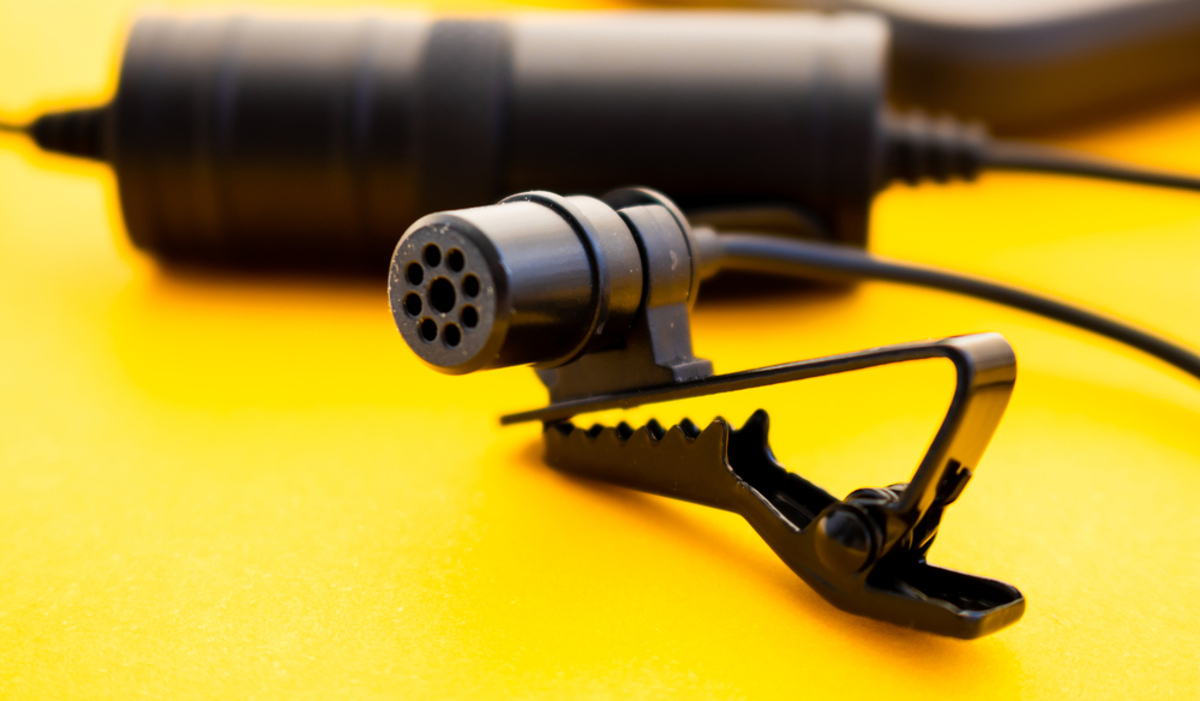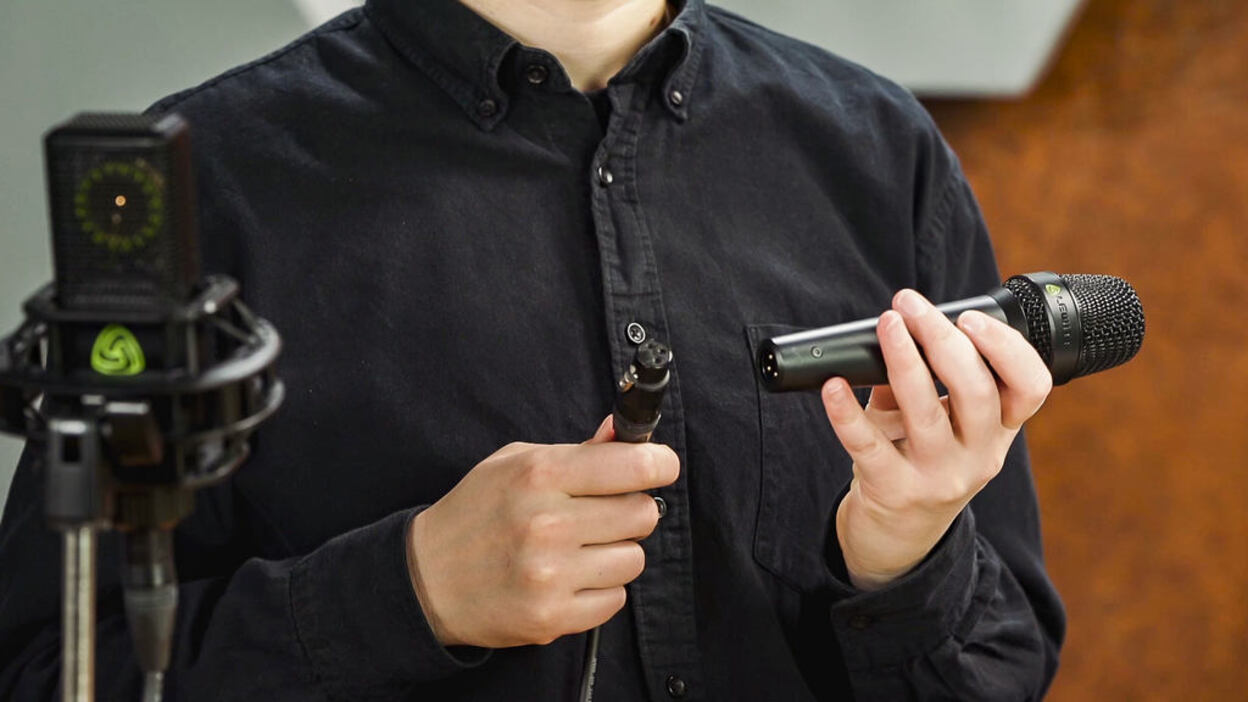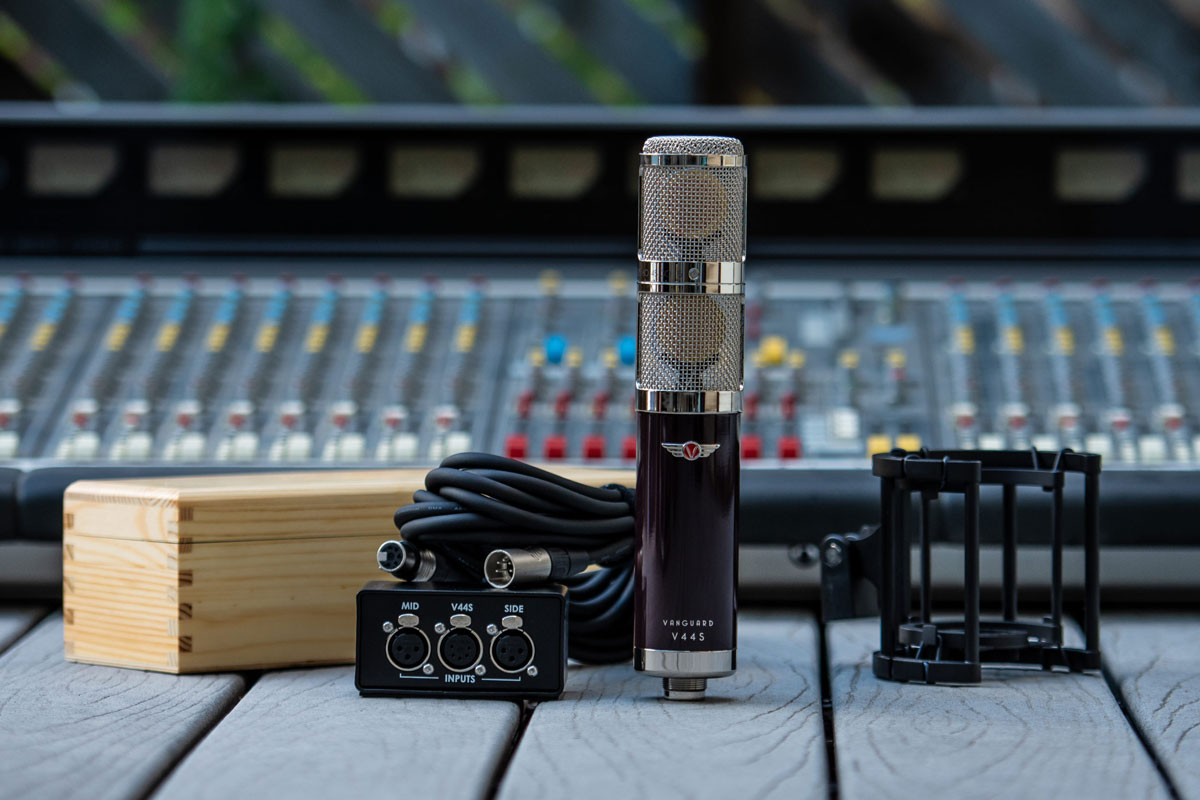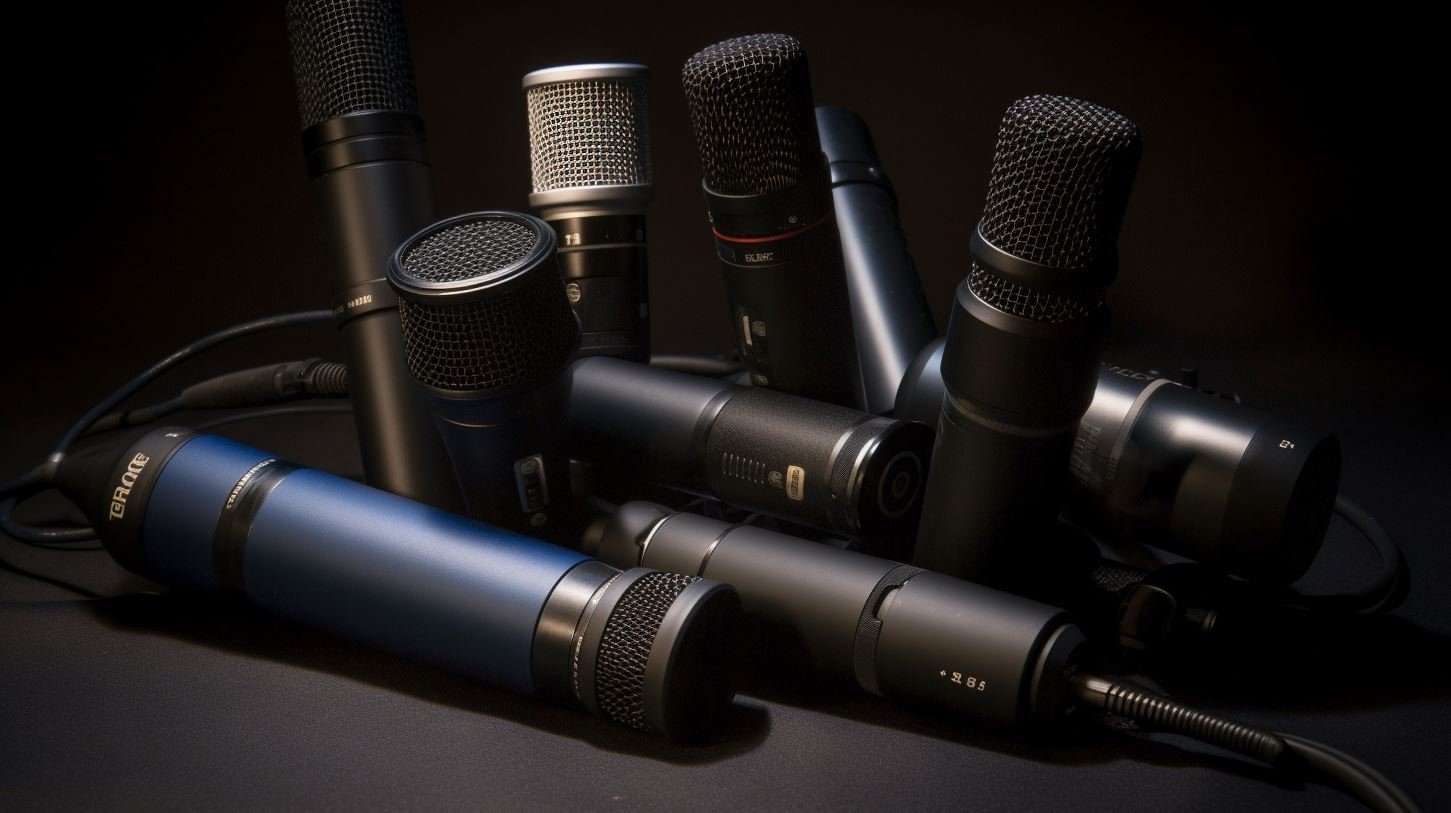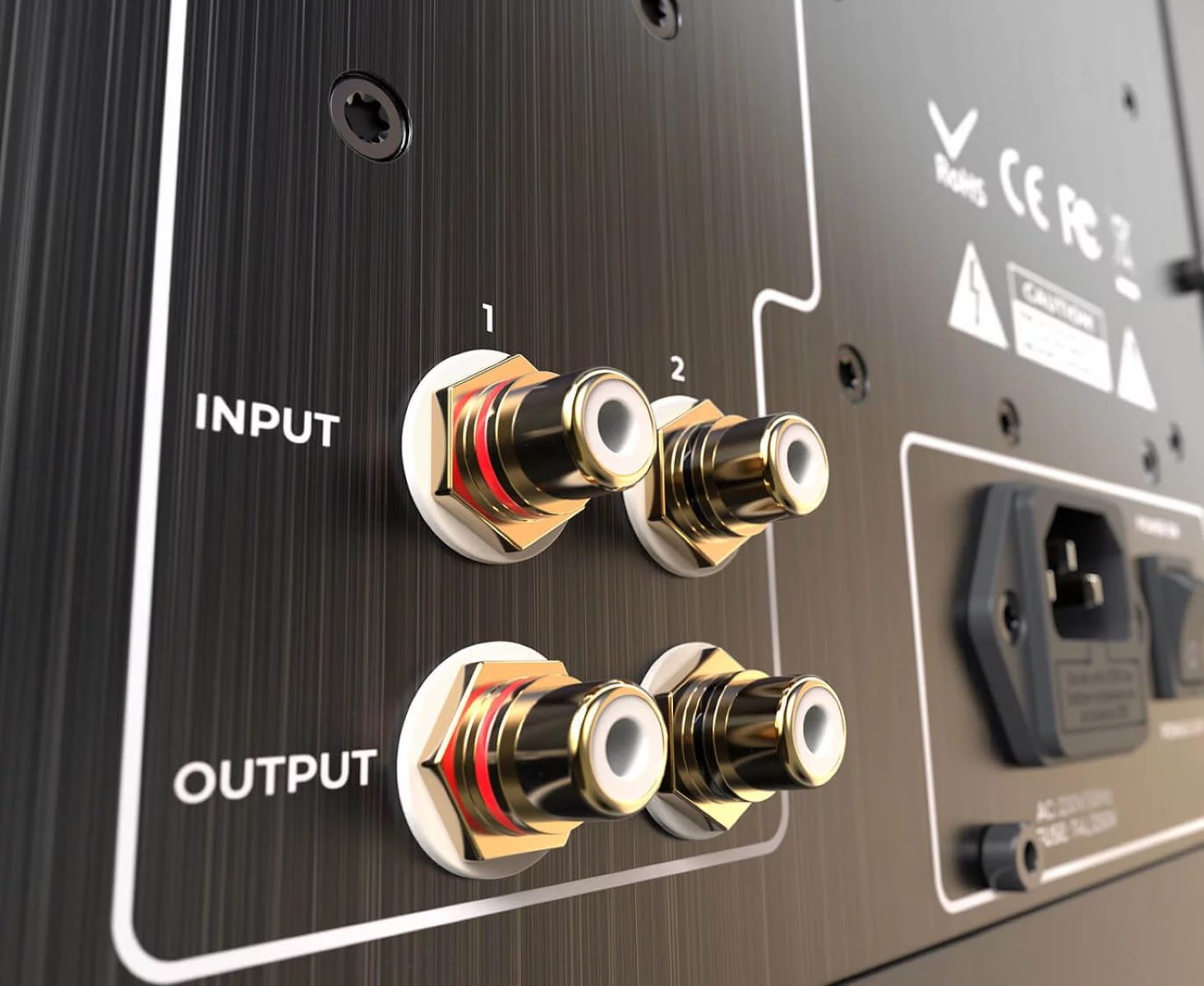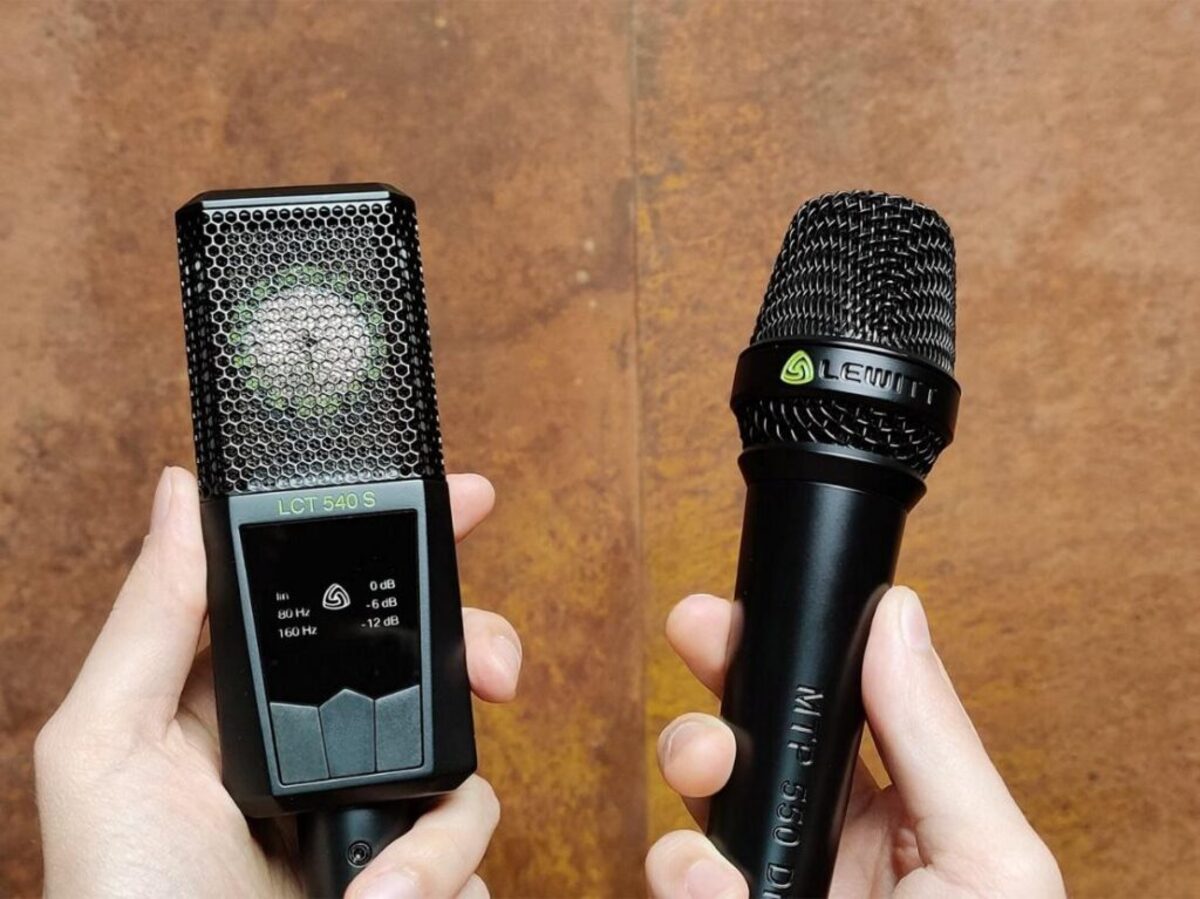Home>Devices & Equipment>Microphone>Microphone Check, One, Two. What Is This?


Microphone
Microphone Check, One, Two. What Is This?
Modified: March 12, 2024
Discover the perfect microphone for your needs and take your sound to the next level. Explore our range of high-quality microphones today.
(Many of the links in this article redirect to a specific reviewed product. Your purchase of these products through affiliate links helps to generate commission for AudioLover.com, at no extra cost. Learn more)
Table of Contents
Introduction
Welcome to the world of microphones, where the power of sound is captured and amplified to resonate with audiences far and wide. Whether you’re a professional musician, a podcaster, a public speaker, or simply someone who loves to sing in the shower, microphones play a pivotal role in amplifying your voice and bringing your sound to life.
In this comprehensive guide, we will delve into the fascinating realm of microphones, exploring their history, the various types available, how they work, and essential tips for choosing the right microphone and using it effectively. Whether you're a seasoned audio engineer or a complete novice, this article aims to provide valuable insights into the world of microphones, empowering you to make informed decisions and unleash the full potential of your voice and sound.
So, grab your favorite beverage, find a cozy spot, and let’s embark on a captivating journey through the captivating world of microphones. Whether you’re curious about the technical intricacies of these devices or eager to discover the perfect microphone for your specific needs, this guide has got you covered. Get ready to amplify your knowledge and tune in to the magic of microphones!
History of Microphones
The history of microphones is a tale of innovation, perseverance, and the relentless pursuit of capturing and transmitting sound. The journey begins in the 19th century, with inventors and scientists striving to harness the power of sound waves. One of the earliest breakthroughs came in 1876 when Alexander Graham Bell patented the first practical telephone, which utilized a rudimentary form of microphone to convert sound waves into electrical signals.
Fast forward to the early 20th century, and we encounter the carbon microphone, a pivotal invention that revolutionized telecommunication and broadcasting. Developed by Thomas Edison and Emile Berliner, the carbon microphone utilized loosely packed carbon granules to modulate electrical current in response to sound waves, effectively transforming acoustic vibrations into electrical signals.
As the decades unfolded, the dynamic microphone emerged as a dominant force in the world of audio capture. With its simple yet robust design, the dynamic microphone became synonymous with live performances, studio recordings, and broadcasting, solidifying its status as a timeless icon in the realm of sound reproduction.
The mid-20th century witnessed the advent of the condenser microphone, a technological marvel that introduced unparalleled sensitivity and precision to audio capture. By utilizing a capacitor to convert sound waves into electrical signals, the condenser microphone offered a level of detail and clarity that captivated audio enthusiasts and professionals alike.
Continual advancements in materials, engineering, and signal processing have propelled the evolution of microphones, giving rise to a diverse array of designs and functionalities. From the sleek elegance of ribbon microphones to the cutting-edge innovation of electret condenser microphones, the landscape of microphone technology continues to expand, offering a myriad of options to cater to various audio recording and amplification needs.
Today, microphones stand as a testament to human ingenuity and the unyielding quest to capture, amplify, and preserve the beauty of sound. As we journey through the annals of microphone history, we gain a profound appreciation for the transformative impact of these remarkable devices, shaping the way we communicate, entertain, and connect through the power of sound.
Types of Microphones
Microphones come in a diverse range of types, each with its own unique characteristics and applications. Understanding the various microphone designs is crucial for selecting the ideal tool to capture and amplify specific sounds. Let’s explore some of the most common types of microphones:
- Dynamic Microphones: Known for their durability and versatility, dynamic microphones are a popular choice for live performances, recording loud sound sources, and capturing high-volume instruments such as drums and electric guitars. Their rugged construction and ability to handle high sound pressure levels make them a staple in the audio industry.
- Condenser Microphones: Renowned for their exceptional sensitivity and wide frequency response, condenser microphones are favored for studio recordings, vocal performances, and capturing nuanced acoustic instruments. These microphones utilize an electrically-charged diaphragm and a backplate to convert sound waves into electrical signals, offering unparalleled detail and clarity.
- Ribbon Microphones: Characterized by their warm, vintage sound and bidirectional pickup pattern, ribbon microphones excel at capturing the natural timbre of instruments and vocals. With their delicate ribbon element, these microphones deliver a smooth, rich sonic character, making them a cherished choice for recording studios and audiophiles seeking a classic sound.
- USB Microphones: Designed for convenience and plug-and-play functionality, USB microphones are ideal for podcasting, voiceovers, and home recording setups. These microphones feature built-in analog-to-digital converters, allowing direct connection to computers and other digital devices without the need for additional audio interfaces.
- Lavalier Microphones: Also known as lapel microphones, lavalier mics are compact, discreet, and commonly used in broadcast, public speaking, and video production. Their miniature size and omnidirectional or cardioid pickup patterns make them suitable for capturing clear speech while minimizing ambient noise.
These are just a few examples of the diverse microphone types available, each offering distinct sonic characteristics and intended uses. By understanding the strengths and limitations of each microphone type, you can make informed decisions to elevate your audio recording and amplification endeavors.
How Microphones Work
At the core of their functionality, microphones operate on the principle of transduction, converting acoustic energy (sound waves) into electrical signals that can be amplified, recorded, or transmitted. The intricate process through which microphones capture and transform sound is a testament to the convergence of physics, engineering, and artistry.
Let’s take a closer look at the fundamental mechanisms behind the operation of microphones:
- Transducer Elements: Microphones employ transducer elements, such as diaphragms or ribbons, that respond to variations in air pressure caused by sound waves. When sound waves strike the transducer, it undergoes mechanical displacement, converting the acoustic energy into physical movement.
- Conversion of Sound to Electrical Signals: As the transducer element moves in response to sound waves, it induces changes in an electrical component, such as a coil or capacitor, within the microphone. This transformation results in the generation of electrical signals that mirror the characteristics of the original sound waves, including amplitude and frequency.
- Output Signal Transmission: The electrical signals produced by the microphone are then transmitted through the microphone cable or wirelessly to audio equipment, where they can be further processed, amplified, or recorded. The fidelity and accuracy of the electrical signals determine the quality and fidelity of the reproduced sound.
The specific design and technology employed in a microphone dictate its performance characteristics, including frequency response, transient response, and directional pickup patterns. Whether it’s the rugged diaphragm of a dynamic microphone, the precision-engineered capacitor of a condenser microphone, or the delicate ribbon element of a ribbon microphone, each type of microphone harnesses distinct transduction principles to capture sound with finesse and accuracy.
Ultimately, the artistry of microphone design lies in the seamless translation of the ephemeral beauty of sound into electrical signals, preserving the nuances and emotions embedded within every sonic vibration. As we unravel the mechanics of microphone operation, we gain a deeper appreciation for the pivotal role these devices play in shaping our auditory experiences and preserving the art of sound.
Choosing the Right Microphone
When embarking on a quest to select the perfect microphone for a specific application, several factors come into play, each influencing the overall sound quality and performance. Whether you’re aiming to capture the soaring vocals of a vocalist, the intricate nuances of acoustic instruments, or the crisp articulation of spoken dialogue, choosing the right microphone is essential for achieving sonic excellence. Here are key considerations to guide you in selecting the ideal microphone:
- Application and Sound Source: Understanding the intended use of the microphone is paramount. Different microphones excel in capturing specific sound sources, such as vocals, instruments, ambient environments, or speech. Dynamic microphones are well-suited for high-volume sound sources, while condenser microphones offer exceptional detail and sensitivity for capturing vocals and acoustic instruments.
- Polar Patterns: Consider the directional characteristics of the microphone’s pickup pattern. Omnidirectional microphones capture sound from all directions, making them suitable for ambient recordings. Cardioid microphones focus on sound from the front while attenuating rear and side sounds, ideal for isolating a primary sound source. Bidirectional and shotgun microphones offer unique directional capabilities for specialized applications.
- Frequency Response and Sensitivity: Assess the frequency range and sensitivity of the microphone, as these factors influence the tonal characteristics and dynamic range of the captured sound. A microphone with a wide frequency response is versatile and capable of faithfully reproducing a broad spectrum of audio frequencies, while high sensitivity ensures clear and detailed recordings.
- Environment and Acoustic Considerations: The acoustic properties of the recording environment play a significant role in microphone selection. Consider factors such as ambient noise, reverberation, and room acoustics when choosing a microphone with suitable noise rejection and off-axis response characteristics.
- Connectivity and Compatibility: Evaluate the connectivity options of the microphone and ensure compatibility with your recording or sound reinforcement equipment. XLR, USB, and wireless connectivity are common options, each offering distinct advantages based on the intended application and setup.
By carefully evaluating these factors and conducting thorough research, you can narrow down the myriad microphone choices to find the perfect match for your specific recording or amplification needs. Whether you’re building a professional studio setup, enhancing your live sound reinforcement arsenal, or diving into the world of podcasting and content creation, the right microphone is the cornerstone of sonic excellence.
Setting Up and Using a Microphone
Once you’ve chosen the ideal microphone for your audio endeavors, the next crucial step is setting it up and using it effectively to capture pristine sound and convey your message with clarity and impact. Whether you’re preparing for a live performance, a studio recording session, a podcast interview, or a public speaking engagement, mastering the art of microphone setup and usage is essential for delivering compelling and professional-grade audio. Here are essential tips for setting up and using a microphone:
- Positioning and Mounting: Proper microphone placement is pivotal for achieving optimal sound capture. For vocal performances and speech, position the microphone at a comfortable distance from the mouth, ensuring consistent proximity and angle for uniform sound pickup. When recording instruments, experiment with microphone placement to capture the desired tonal characteristics and spatial imaging.
- Pop and Wind Protection: When using microphones for vocal applications, consider employing pop filters or foam windscreens to mitigate plosive sounds and wind noise. These accessories help maintain a smooth and consistent vocal delivery while minimizing unwanted sonic artifacts.
- Gain Staging and Signal Levels: Pay attention to the gain staging of the microphone signal, ensuring that the input levels are optimized to prevent distortion and noise while maximizing signal clarity. Adjust the microphone preamp or input gain to achieve an appropriate signal level without overloading the audio interface or recording device.
- Monitoring and Feedback Prevention: When using microphones in live sound reinforcement scenarios, monitor the audio signal to prevent feedback and ensure a clear and intelligible sound. Position monitor speakers strategically and use equalization techniques to mitigate potential feedback issues while maintaining a balanced and natural sound mix.
- Maintenance and Care: Regularly inspect and clean your microphones to preserve their performance and longevity. Protect microphones from physical damage and extreme environmental conditions, and store them in protective cases when not in use. Additionally, follow manufacturer guidelines for maintenance and storage to safeguard the microphone’s delicate components.
By mastering these fundamental techniques and best practices, you can harness the full potential of your microphone, elevating the quality of your audio productions and live performances. Whether you’re capturing the emotive nuances of a vocal performance, the sonic intricacies of musical instruments, or the clarity of spoken word, a well-set-up microphone serves as a conduit for authentic and captivating sound reproduction.
Conclusion
As we conclude our exploration of the captivating world of microphones, we emerge with a profound appreciation for the pivotal role these devices play in shaping our auditory experiences and preserving the art of sound. From the humble origins of the carbon microphone to the cutting-edge innovations of modern condenser and wireless microphones, the evolution of microphone technology stands as a testament to human ingenuity and the relentless pursuit of sonic excellence.
Whether you’re a seasoned audio professional, an aspiring musician, a content creator, or a passionate storyteller, the knowledge and insights gained from this guide empower you to make informed decisions and elevate your sound capture and amplification endeavors. By understanding the history, types, operation, and selection criteria of microphones, you are equipped to embark on a journey of sonic exploration, harnessing the power of sound to connect, inspire, and captivate audiences around the globe.
As you venture into the realm of microphones, remember that these remarkable devices not only capture sound but also encapsulate emotions, memories, and the very essence of human expression. Whether it’s the soaring vocals of a vocalist, the resonant tones of a musical instrument, or the articulate delivery of spoken word, microphones serve as conduits for preserving the beauty and authenticity of sound, transcending barriers and resonating with hearts and minds.
So, as you embark on your next recording session, live performance, podcast episode, or public speaking engagement, may your chosen microphone become a faithful ally, faithfully capturing the essence of your sound and amplifying the power of your voice. Embrace the artistry of sound capture, experiment with different microphone types and techniques, and unleash the full potential of your sonic creativity. The world of microphones awaits, ready to amplify your voice and resonate with the magic of sound.


